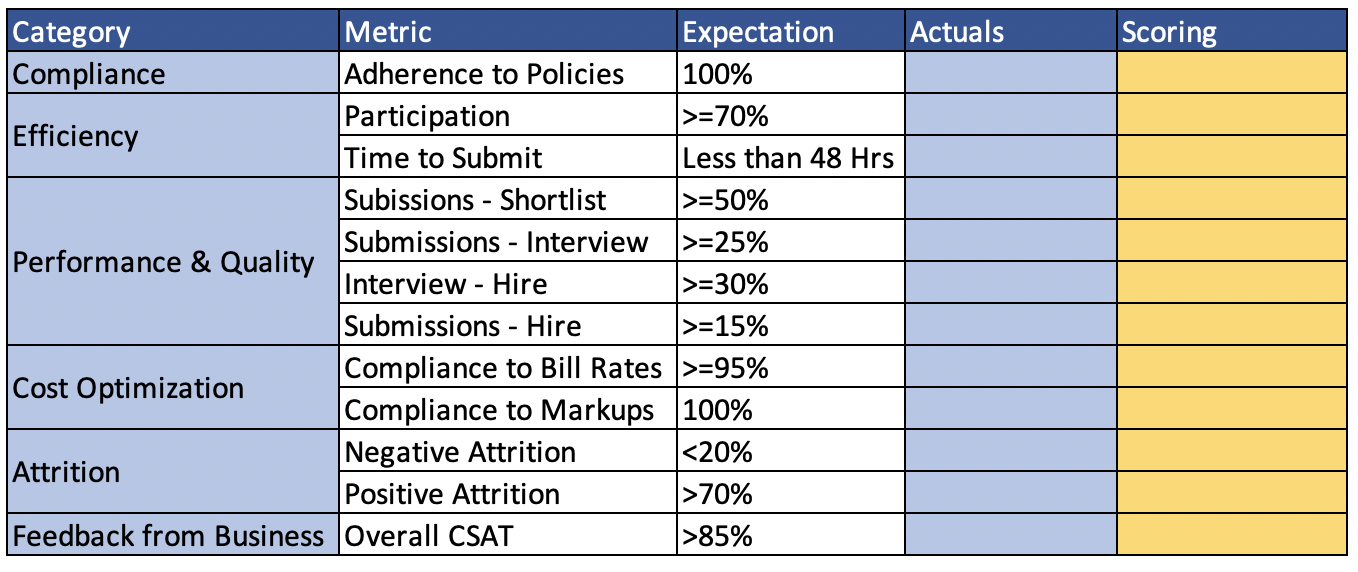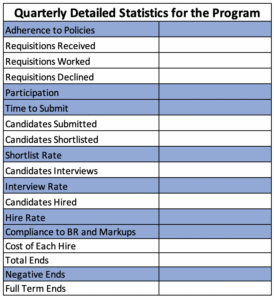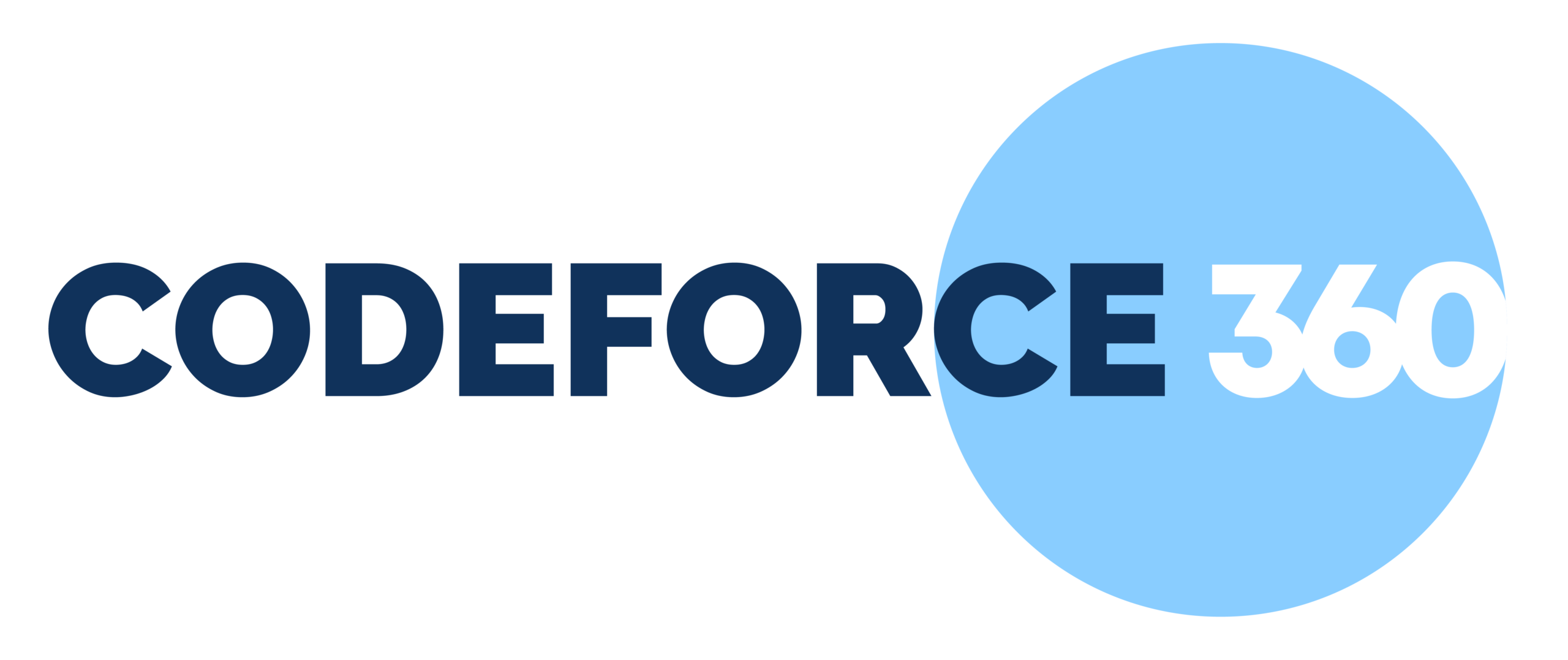CONTINGENT WORKFORCE EXPERIENCES
Outcome-based measurement in Contingent Workforce Services

HITESH V
Author
8 January 2020
Over the last two years, we have invested a significant amount of time in defining the categories, criteria and data sources, assessment methods, and measures that can be implemented and evaluated across all our programs to measure our results and drive efficiency, productivity, and cost savings for CodeForce and for our customers.
Through this blog post, I would like to share our methodology and our standard score carding mechanisms that are delivering success to all our programs.


“What Gets Measured, gets done. What gets measured and fed back gets done well“
UNKNOWN

We started with our goal-setting process. Every MSP or In-Sourcing we work with have different measurement criteria and measuring the performance of each of there programs in a standard CodeForce way was very critical for our success. The initial target is to identify the categories that are common across all the programs and then define metrics in each of these categories along with the expectations that are defined independently of the programs by CodeForce.
After a detailed evaluation of all the scorecards from various MSP and In-Sourcing programs, we have identified and narrowed down on the below high-level categories for measurement.
- Compliance
- Efficiency
- Performance & Quality
- Cost Optimization
- Attrition and
- Feedback from Business
Compliance stands on the top of all the categories. A standalone Audit team was established to continuously audit every process across all programs for their compliance. Metadata and key points from every clause in the MSA or Flow Downs from the programs is extracted and captured in a well-defined template that helps us in auditing compliance to the MSA and flow downs.
A very good example is if the use of Sub Contractors is allowed for a specific end-client or not. Another example can be the submission format or submission of PhotoID's while screening and submission processes. Certain policies can be post-confirmation with Background checks required or onboarding or offboarding process that are specific to the program.
Efficiency comes second in the categories list. How efficient we perform in the program determines our success in the program. Be it our participation in the requirements or our TAT to submit qualified and screened candidates. We can only win the race and get returns on our investment only if we are highly efficient.
Performance and Quality is another important measurement category that will help us identify gaps and implement strategies or processes to be successful. The quality of submissions, interviews, hires is a very important metric that we need to constantly measure.
Cost Optimization and adherence to bill rates agreed upon are very critical for the program. Over the last year, we have invested in various technology and sourcing techniques to optimize our cost and source candidates within prescribed bill rates. In a competitive market, we must innovate to optimize costs and pass the savings to our customers.
Attrition of consultants before projects start or during the project and Feedback from business are the two other categories we must measure in every program.
Now that we talked about all our categories, let's look at the metrics and the expectations that have been standardized across all programs. The final result is a well defined standard scorecard that is independent of the program and will help us measure our performance before the program shares the metrics.

Vendor Management systems and Applicant Tracking systems are the major data sources for our measurement across all the categories.
With this standardized scorecard across all programs, we have partially achieved our SMART measurement criteria and metrics. But for outcome-based measurement, we need Detailed statistics in the program and our performance in comparison to our competition. For leadership to rethink the strategies, innovate, or learn, we definitely need more insights. So we developed a more detailed statistical model that describes our performance, quality, costs, and attrition.

Quarterly detailed statistics for the program to evaluate our performance, quality, cost, and attrition.
A standardized scorecard across all programs combined with a specific, measurable, attainable, relevant, and time-bound measurement of our performance is key for our continuous innovation and growth.
